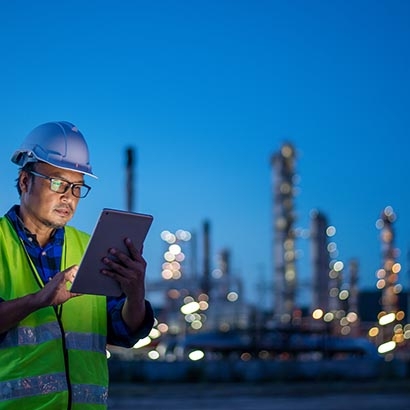Plastic water bottles, bags and packaging are taking a toll on the environment, prompting consumers, governments and corporations to rethink plastic.
Whether it's used for take-out food, bottled water or household products, plastic is an ideal material; it's light, durable and cheap. Yet, the same qualities that have increased global demand for single-use plastic twentyfold since the 1960s are also taking a toll on the environment and our health.
Nearly 13 million tons of plastic is dumped into the ocean each year, and at the current pace there could be more plastic than fish in the oceans by 2050. Meanwhile, the complexity of plastic and low margins for recycling it means that most single-use plastic waste gets buried in a landfill or incinerated.
Now, several trends are converging that could help wean the world off plastic. “Consumers are starting to voice concerns, companies are taking steps to curb their use of virgin plastic, and there is growing momentum from some regulators,” says Jessica Alsford, head of Global Sustainability Research at Morgan Stanley. Still, it will take massive efforts from many fronts to keep pace with use.
In a recent report from Morgan Stanley Research, Alsford and her colleagues look at whether these and other efforts to reduce, reuse and recycle will lessen dependency on single-use plastic. They also outline the investment implications for key players, including consumer staples, petrochemicals and waste management.
How Did We Get Here?
To understand how plastic has become so pervasive, consider the daily habits of most people in developed markets. Even conscientious consumers are hard-pressed to avoid drinks bottled in plastic, produce packed in clear clamshells and consumer products secured in impenetrable armors of plastic.
All told, packaging is the number one use for plastic. Global production of plastic is on pace to double in the next 20 years, with China and India alone expected to account for half of the expected demand for PET and HDPE.
Annual Consumption of Plastic Material By Country (kg per capita)
Further compounding the issue, as of late 2017, China is no longer accepting low-grade plastic waste for recycling. This is likely to further boost demand for so-called virgin plastic in the near-term—though it could ultimately help catalyze companies to seek better alternatives, change consumer behavior and give rise to more effective recycling.
Singling Out Single-Use Plastic
While consumer perception coupled with public outreach (think water bottle refill stations) has helped raise consumer awareness, a wave of government regulations and incentives—such as bans, surcharges and deposit refunds, as well as subsidies for recycling—are taking aim at plastic. In late 2017, nearly 200 countries signed a United Nations resolution to eliminate plastic in the sea. In January, the European Commission announced its first strategy on plastics, calling for all plastic packaging to be reusable or recyclable by 2030.
Change is also coming from the corporate level. Late last year, CEOs for 11 global brands wrote an open letter calling for alternatives to plastic packaging. Some companies have already started. Starbucks has invested $10 million into developing a fully recyclable cup and lid within three years. McDonald's plans to make all its customer packaging renewable, recycled or from certified sources by 2025. Unilever aims to reduce its packaging by a third by 2020, with 100% recyclable by 2025.
Short-Term Setbacks
While the world is tackling the plastic predicament from many angles, production of so-called virgin plastic is likely to pick up before it slows down. “Short-term, the major petrochemical companies are benefitting from a reduction in plastic recycling in China with the polyester upcycle getting stronger and firmer,” says Alsford.
Even as European regulators are taking aim at plastic, he adds, such efforts will need to be adopted globally to have a material impact on the global petrochemical industry. Relatively low oil prices are also a factor. Oil needs to sit at or above $65 a barrel for recycled product to be more economically viable than virgin plastic.
Meanwhile, the possibility of peak plastic is a mixed bag for waste management companies. On the one hand, an uptick in recycling will boost volumes and potentially benefit businesses. On the other, as it stands today, recycling plastic garners far lower margins than burning it or burying it.
Although better innovation could improve the economics of recycling, consumers could do more to make recycling more feasible. However, according to Richard Taylor, who leads Morgan Stanley's European consumer equity research team, “in this area, incentives and targets are the key.” He points out that long term incentives for consumer companies on plastic are “largely absent” and the packaging on consumer products “is rarely 100% recyclable and rarely with a clear motivation for the consumer and producer to recycle the product such as a returnable deposit.”
Currently Existing Alternatives Have A Higher Environmental Cost
(Environmental Cost in Consumer Goods Industry)
Finally, better alternatives are needed. The current crop of material—glass, tin, aluminum and paper—is more widely recycled, but they don’t always guarantee a positive environmental benefit when taking the whole life cycle into account. “For now the answer may be more sustainable plastic as the solution,” adds Taylor. “We see it as a short-term solution but what's needed most are new sustainable materials that can substitute plastic in the long term.”
For more Morgan Stanley Research on plastic, ask your Morgan Stanley representative or Financial Advisor for the full report, “Peak Plastic? A Focus on Single Use Plastic,” (April 19, 2018). Plus, more Ideas.



